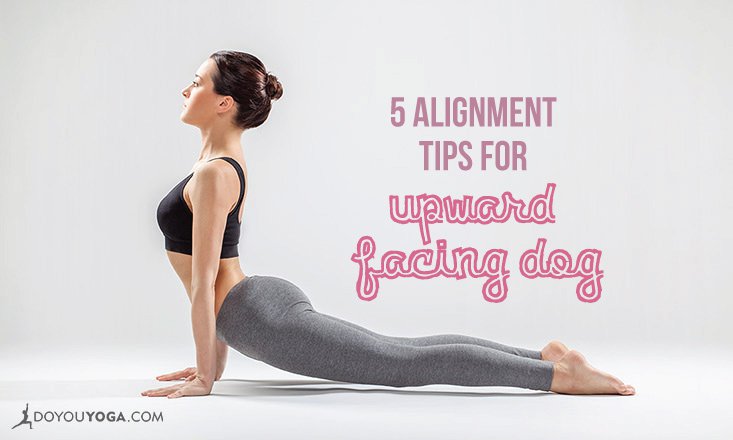The Upward facing dog, or Urdhva Mukha Svanasana, is a common pose in yoga class, and like anything done as part of a Vinyasa or Sun Salutation flow, there is hardly time to pause for a moment for alignment check.
But it's worth it, since also on its own this is a great pose for strengthening the upper body, arms and the wrists, as well as stretching the shoulders and improving the overall posture.
So what are the points that need attention while you park yourself into this back-bend?
1. Align the shoulders over the wrists
It's always important to stack yourself correctly in any yoga pose in order to protect the joints. The same goes with the Upward facing dog. In this pose, make sure your wrists are aligned directly under the shoulders.
Use a mirror or a yoga buddy to verify the correct alignment for you, as this may be difficult to feel for yourself at first. If your shoulders come past the wrists, the angle on the wrist joint increases and makes the wrist more vulnerable. Then again if your shoulders are very much behind the wrists, the lower back may take too much of the bend.
2. Lift up those thighs
One of the main differences between the Cobra pose and Upward facing dog pose is that in the latter the thighs, knees and the pubic bone should be lifted up from the mat.
You achieve this by pressing the tops of the feet actively onto the mat, as well as pressing the hands on the mat so that your knees, thighs and hips can lift off. The correct alignment of wrists under the shoulders will also help you with activating your legs.
3. Pull the shoulders down
It's all too easy to let the shoulders sag so that your neck sinks between the shoulders. Instead, really lift up actively through the arms, and pull the shoulders back while the shoulder blades are pulling downwards.
You don't need to be looking up or jamming the head to the back. You can keep the gaze neutral and the neck long. The focus remains on the back.
4. Open up your heart
When you are in the pose, try to pull the arms back energetically, and bring the chest forward, as if trying to take the chest further forward through the arms. You will feel the shoulder blades move closer and down, as space opens in your chest.
Keep the shoulders down, and the neck long, and enjoy the space you create around the heart.
5. Use props for assistance
If you want more space, take two blocks and place them on the ground so that your hands are on the blocks instead of on the floor. This will make the pose easier on your back, since you will have more room for the back.
You could also place a rolled up blanket underneath your thighs, if you need some extra support to get the thighs off the mat.
Contraindications
- If you have injuries or sensitiveness in the wrists, you can come down on your forearms for the Sphinx pose instead.
- Avoid the Upward facing dog pose when you have injuries in the lower back or when you are pregnant.
The Upward Facing Dog is a very healthy pose for the back, and it provides a nice counter movement for the spine from the more common forward rounding of the back. You can practice the vulnerability that comes through back-bends, and the space that can be created in the heart.


